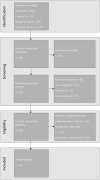Intraocular Lens Power Calculation Formulas-A Systematic Review
- PMID: 37698825
- PMCID: PMC10640516
- DOI: 10.1007/s40123-023-00799-6
Intraocular Lens Power Calculation Formulas-A Systematic Review
Abstract
Purpose: The proper choice of an intraocular lens (IOL) power calculation formula is an important aspect of phacoemulsification. In this study, the formulas most commonly used today are described and their accuracy is evaluated.
Methods: This review includes papers evaluating the accuracy of IOL power calculation formulas published during the period from January 2015 to December 2022. The articles were identified by a literature search of medical and other databases (PubMed/MEDLINE, Crossref, Web of Science, SciELO, Google Scholar, and Cochrane Library) using the terms "IOL formulas," "Barrett Universal II," "Kane," "Hill-RBF," "Olsen," "PEARL-DGS," "EVO," "Haigis," "SRK/T," and "Hoffer Q." Twenty-nine of the most recent peer-reviewed papers in English with the largest samples and largest number of formulas compared were considered.
Results: Outcomes of mean absolute error and percentage of predictions within ±0.5 D and ±1.0 D were used to evaluate the accuracy of the formulas. In most studies, Barrett achieved the smallest mean absolute error and PEARL-DGS the highest percentage of patients with ±0.5 D in short eyes, while Kane obtained the highest percentage of patients with ±0.5 D in long eyes.
Conclusions: The third- and fourth-generation formulas are gradually being replaced by more accurate ones. The Barrett Universal II among vergence formulas and Kane and PEARL-DGS among artificial intelligence-based formulas are currently most often reported as the most precise.
Keywords: Barrett Universal II formula; Intraocular lens power calculation formulas; Kane formula; PEARL-DGS formula; Phacoemulsification.
© 2023. The Author(s).
Conflict of interest statement
Wiktor Stopyra and Achim Langenbucher have nothing to disclose. Andrzej Grzybowski has Grants/Contracts from Alcon, Bausch & Lomb, Zeiss, Hoya, Thea, Viatris, Teleon, J&J, Cooper Vision, Essilor and Polpharma; consulting fees/honoraria from Thea, Polpharma, Viatris and stock with GoCheckKids.
Figures
References
Publication types
LinkOut - more resources
Full Text Sources
Research Materials


